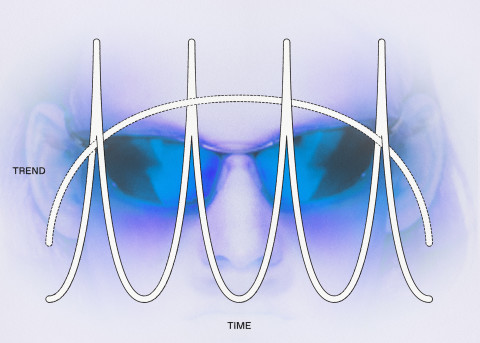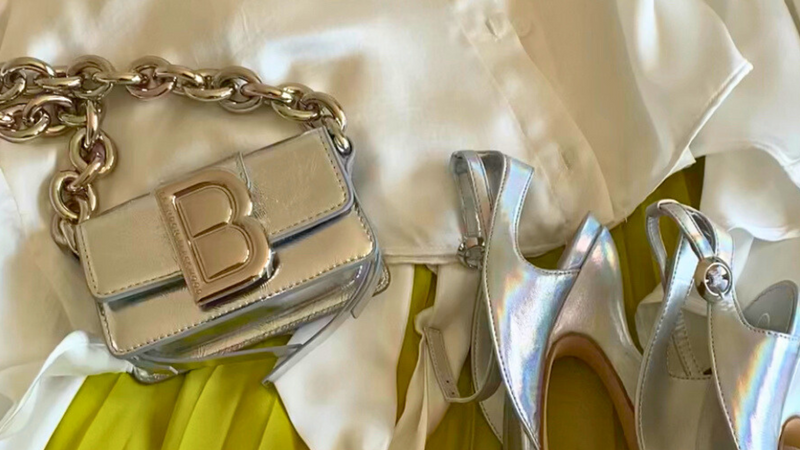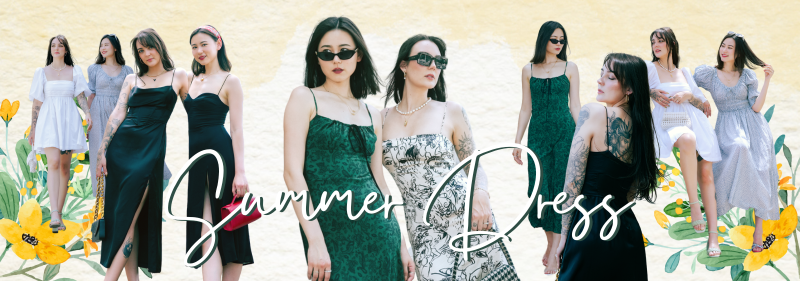The New Anatomy of Trends
How the internet changed the way we experience—and move through—cultural and stylistic fluctuations.

Welcome to the new world order. Gone are the days of cut-and-dried trend forecasting; the bell curve no longer rings true. Before the internet became indelible in our lives, forecasting agencies would seek out whispers in counterculture, then sell the trends to corporations that would shower them upon the masses. We tuned into MTV’s or flipped through the magazines in the checkout line to see what the latest thing was: like layered babydoll dresses that everyone paired with combat boots in the ‘90s or the oversized clothing that hung off the frames of nearly every rapper in the early 2000s. The 20-year cycle is no longer king either. Social media democratized, and scrambled, all of it.
In this instance, trends don’t refer to the hottest color or breakout piece of any given season. Instead it’s the collective moods and meanings that lead to those elements; more the than the . Example: Looking to go in late 2021 as we were all emerging from our cocoons post-pandemic lockdown, the collective gravitated toward the opposite: bodycore, skin-celebrating pieces such as the viral ‘Miu Miu set’ (seen everywhere) and dopamine dressing.Depending on your point of view, trends can reflect current cultural consciousness or be fleeting flights of fancy that keep consumerism humming. Nevertheless, no one can deny that upon further investigation of, say, a seemingly frivolous declaration like “crop tops are in,” there are factors that tell us more about ourselves than we care to admit. Now, trends are turning over faster than they’re established. Mere days after they surface online, they vanish: sacred for the few in the know, detrimental for those who wished they did.

Before image-driven social media, there was a bewildering discovery that intrigued us, followed by an almost methodical research component that went into building our understanding of the trends and where they came from. London-based strategy director Paul Simmons notes that “you would gain the required knowledge from a variety of sources: films, magazines, books, vintage shops, etc. But today [the internet] is giving us an instant, digital collage of ideas” with little to no context “that originally tied the ideas and aesthetics together.” He calls this the “flattening effect,” as any background, or the time afforded to search for it, has been wiped out altogether as the item sits in your shopping cart.Rachel Lee, an insights and cultural analyst, takes it a step further, noting that culture has a bad habit of “stealing from obscure subcultures and marginalized groups,” something that mainstream trend-forecasting only exhilarates. Lee notes that it’s “important to evaluate and criticize” sources and reminds us to exercise “due diligence to go back to the original material, be it actually talking to members of those subcultures or referencing history accurately.” How do we orient ourselves in this messy collective shift and keep ourselves thoughtfully aware?Alfredo Mejia, a Berlin-based creative strategist, theorizes that trends—and the way we interact with them—have now split into two types. There’s the short-lived “quickstrikes” like Heaven by Marc Jacobs’s nostalgic resurrection of Deftones earlier this year. “They serve to position a brand’s ethos within the cultural zeitgeist but are quickly replaced and hardly seen IRL,” says Mejia. The more long-term trend type, “tangible tendency,” starts digitally but “has the potential to be replicated in real life.” Think Barbiecore, which has been building groundswell for over a year, fueled in part by Valentino, the Greta Gerwig film, and pure childhood nostalgia by everyday people IRL. The longevity of this type is partly due to a “feedback loop between online and offline communities, driving a longer cycle of adoption.”

“Ultimately, trends are a reflection of our human need to belong and feel good,” says Mejia. “Trends provide a way to express our identity and connect with others.” Really, we all just want to feel that we’re part of something, and the more that we live apart, the more important those elements of connection become.Is the collective mess of the internet and speed of change forcing us to find our most authentic selves to date (tapping into the microniche and statement dressing) or having us drop out of the game altogether due to the consistent deluge of shifts and information, opting for a collection of simple basics? What happens if we collectively stop chasing the newest thing? Do we enter into a next-level version of normcore? Could it be showing up as quiet luxury/stealth wealth today but with an investment-piece twist? Alternatively, does this current state allow us to be inspired to find our truest authentic selves since anything is possible and everything is now trending?We are witnessing a peak in the social media age which is forcing a redefinition of trends: rewiring the intersections of styles, lifestyles, and roles that various forms of influence plays. Of course, finding ourselves somewhere in the middle of—or looking to mute—the chaos will always come down to personal preference. However, the reformalization of trends has staying power: Do we drop out and observe our world of differences and complexities by tapping into our sameness, or do we celebrate our uniqueness in all of its glory, finding our special blend somewhere out in the ether? Either way, somehow, we’ll all be on-trend.



